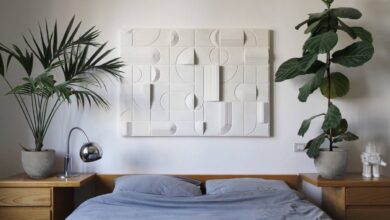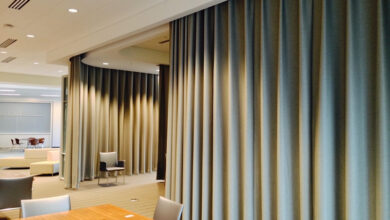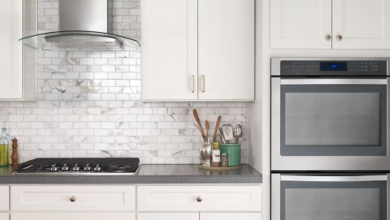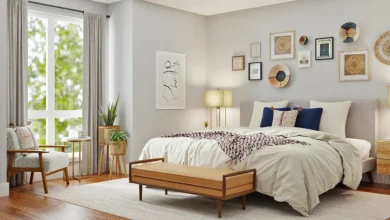Transforming Small Spaces with Innovative Door Designs

Small spaces present precise demanding situations and opportunities in interior layout. In such environments, every detail subject, and minor element may have a sizeable impact on the general feel and capability of an area. Among these elements, doors play a crucial function. Innovative door designs can maximize space, decorate aesthetic enchantments, and enhance accessibility. This article explores diverse progressive door designs which could rework small areas, making them more practical and visually appealing.
1. Sliding Doors: Maximizing Space Efficiency
Sliding doorways are a staple within the realm of space-saving solutions. Unlike traditional hinged doorways, sliding doorways do now not require extra space to open and close. This makes them best for compact rooms where each inch counts.
A. Pocket Doors
Pocket doors are a type of sliding door that slides right into a compartment inside the wall. This design is ideal for areas where a traditional door could be impractical. When open, the door is completely hidden inside the wall, supplying an uninterrupted right of entry and a cleaner appearance. Pocket doors are specifically beneficial in tight spaces like toilets, small bedrooms, or among rooms wherein a continuing transition is preferred.
B. Barn Doors
Barn doorways, with their rustic attraction, have won popularity in modern design. These sliding doorways are hooked up to music above the door body, which allows them to glide horizontally. They upload a touch of farmhouse elegance at the same time as serving a realistic characteristic. Barn doorways can be used for interior rooms, closets, or as stylish walls, enhancing the functionality and aesthetic of small areas.
2. Bi-Fold Doors: Compact and Versatile
Bi-fold doorways are another great solution for small areas. They include or more panels that fold in on themselves when opened, correctly reducing the swing space required by using traditional doors.
A. Closet Doors
Bi-fold doors are usually used for closets in small bedrooms or hallways. Their folding mechanism lets in easy access to the closet even a saving area as compared to traditional hinged doorways. Modern bi-fold doorways can be made from a lot of materials, together with wooden, glass, or even reflected surfaces, that may enhance the room’s light and experience of space.
B. Room Dividers
Bi-fold doorways can also characterized as room dividers. In studio flats or open-plan spaces, bi-fold doors can be used to create brief walls, imparting privacy while needed at the same time retaining an open experience while folded away.
3. Glass Doors: Enhancing Light and Visual Flow
Glass doors are an extremely good preference for small spaces as they assist in creating an experience of openness and continuity. They allow light to drift among rooms and can visually make the distance.
A. Frosted Glass Doors
Frosted glass doorways provide privacy even while still allowing light to bypass. They are a great alternative for lavatories or another area where privateness is a subject however where mild and openness are desired. The frosted finish also provides a modern-day touch to the decor.
B. Clear Glass Doors
Clear glass doorways are best for connecting rooms and maximizing natural mild waft. They paintings especially properly in small flats or houses with an open ground plan. However, it is critical to take into account the position of those doorways to avoid compromising privacy.
C. Glass Panels in Doors
Incorporating glass panels into traditional doors can also be a top-notch way to increase light and openness. These doorways provide a traditional look with a present-day twist, mixing seamlessly with numerous indoor styles.
4. Multi-Functional Doors: Beyond the Basics
Innovative door designs aren’t constrained to aesthetics and area-saving functions; they also can provide extra functionality.
A. Integrated Storage Doors
Some doors come with built-in garage options, which include cabinets or hooks. These multi-practical doors may be especially beneficial in small spaces wherein storage is at a top class. For instance, a door main to a small pantry might include cabinets for storing spices and condiments.
B. Door with Built-In Pet Door
For puppy proprietors, doorways with integrated pet doors can be a game-changer. These doors permit pets to transport freely among rooms without requiring a separate door or starting. This design is realistic and facilitates preserving the capability and glide of the residing space.
5. Customizable Doors: Tailored Solutions for Unique Spaces
In small areas, one-size-suits-all answers regularly do not suffice. Customizable doorways can cope with precise design-demanding situations and alternatives.
A. Custom Shapes and Sizes
Custom doorways can be made to suit unconventional spaces or to complement precise architectural features. For example, doors with arches or non-widespread dimensions may be designed to be in shape flawlessly in niches or under stairs, maximizing each available inch.
B. Modular Door Systems
Modular door structures provide flexibility and customization. These structures permit you to configure doors in numerous methods, along with developing a chain of interconnected panels or combining specific materials and finishes. This adaptability makes modular doorways best for creating bespoke solutions in small spaces.
6. Innovative Materials and Finishes
The choice of substances and finishes can considerably affect the capability and appearance of doors in small areas.
A. Lightweight Materials
Materials that include aluminum or lightweight composite substances can be used to create doors that are easier to handle and less glaring. These materials are long-lasting and may be finished in various approaches to shape special styles.
B. Reflective Finishes
Reflective finishes, inclusive of high-gloss or mirrored doorways, can create a sense of depth and space. These finishes replicate light and create visual interest, making them an elegant choice for current interiors.
7. Smart Doors: Technology Meets Design
The integration of generation into door design is becoming increasingly popular. Smart doorways can offer enhanced safety, convenience, and functionality.
A. Keyless Entry Systems
Keyless entry structures, which include biometric scanners or digital keypads, offer a steady and present-day way to access rooms. These systems remove the want for conventional keys and can be mainly useful in shared living areas or homes with a couple of occupants.
B. Automated Doors
Automated doors that may be managed through far-flung, phone apps or voice instructions offer convenience and accessibility. They are mainly useful for humans with mobility-demanding situations and may upload a futuristic touch to a domestic.
Conclusion
Transforming small spaces through revolutionary door designs involves cautious stability of functionality, aesthetics, and efficiency. Sliding doorways, bi-fold doorways, glass doorways, multi-functional designs, customizable options, and superior materials all provide specific solutions to the demanding situations posed by compact living areas. By deciding on the right door design, you may beautify the functionality, mild, and fashion of a small area, making it now not only more effective and extra livable but also extra fun. As layout trends keep evolving, embracing creativity and innovation in door designs will remain a key strategy in making the maximum of each square inch.



